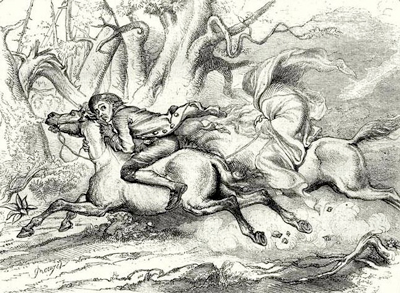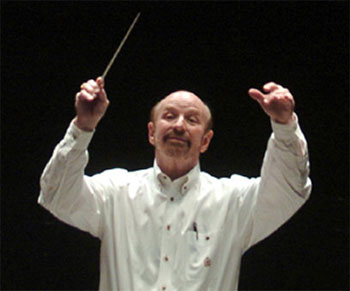by Mike Telin

Composer, educator and long-time New York Philharmonic associate principal bassist, Jon Deak, has composed a number of works inspired by literature, including George Orwell’s 1984 and the Brothers Grimm’s Hansel and Gretel. Written in 1991, The Headless Horseman was nominated for a Pulitzer Prize in 1992. However, it was Bryan Dumm who first told Carlton Woods about the piece. “Bryan had heard one of the first performances of the work and fell in love with it,” Woods said during a recent telephone conversation. “I wasn’t certain it would work for a chamber orchestra like us, so I called Jon Deak and chatted with him about it, and he thought that it would be fine.” In addition to the solo string quartet and narrator, the work is scored for single winds, two horns, two trumpets, trombone, strings and a “vast array of percussion.”
Irving’s tale was adapted by the composer, although Woods pointed out that it is an encapsulated version of the story. And, while no one will be in costume, the characters will be portrayed by the solo quartet. “There is an interesting section where it sounds like the instruments are talking to each other,” Woods said. “Deak has even put the text underneath the instrumental lines so the players get a sense of what they are saying. Even though no words are spoken, it is very clear by the way he has written it what the dialogue is.”
Musically speaking, Woods finds the piece to be very interesting and full of a variety of styles. “There are spots that sound like Richard Strauss, and there are a number of atonal sections. A wonderful Tango depicts the ballroom scene, and the musical descriptiveness of the horse at the end is great. The narration is not only spoken-word, but is often rhythmic, more like Sprechstimme. It’s really a lot of fun and I’m sure the audience is going to enjoy it.”
Saturday’s concert also includes Debussy’s Prelude to the Afternoon of a Faun, arranged by Benno Sachs, who was a member of the Society for Private Music Performances (Verein für musikalische Privataufführungen). The Society was founded by Arnold Schoenberg in 1918. “Students in the Society adapted many large scale works — including compositions by Mahler — for the small instrumental ensemble they had available,” Woods explained. “Interestingly, these arrangements were not originally made with public performance in mind. It was really all about the education process, specifically to get inside a piece of music in order to better understand it.”
Sachs’s arrangement of “Faun” is scored for flute, oboe, clarinet, two violins, viola, cello, bass, piano and harmonium, although for this performance Woods is also including a harp. “Since we have a harp on the program already, I thought it would be a wonderful addition. I’m certain that if Benno Sachs had had a harp at his disposal he would have included it in this transcription.” Woods also has firsthand insight into the activities of the Society, having had the opportunity to study with the Austrian-born composer and musicologist Paul Pisk. “He was one of the first members of the Society. It was always interesting to hear his stories about the things that went on during the sessions.”
The final piece on the program will be Respighi’s Trittico Botticelliano. The work was inspired by three paintings by Sandro Botticelli: La Primavera (Spring), L’Adorazione dei Magi (The Adoration of the Magi), and La nascita di Venere (The Birth of Venus). Woods thinks the piece will compliment the Deak and Debussy perfectly.
In addition to making up a wonderful concert program, all three works are also well suited for educational purposes. “This concert comes at the end of our very intensive month-and-a-half-long collaborative residency with St. Ignatius High School,” Carlton Woods explained. “During the residency, members of the orchestra visited the St. Ignatius classrooms and discussed music and its connection to the various academic disciplines like math, physics, literature, history, theology. The Headless Horseman of Sleepy Hollow was inspired by literature, as was Prelude to the Afternoon of a Faun (a poem by Mallarmé). And Trittico Botticelliano was inspired by the visual arts.” In addition to St. Ignatius, BlueWater will also perform The Headless Horseman of Sleepy Hollow for elementary school students at the Urban Community School.
This season BlueWater is continuing to present 75-minute concerts played without intermission. “The audience reaction has been extremely positive. In reality we are performing 60-plus minutes of great music. We tried this for the first time a couple of years ago. I thought it was wonderful, and I think it’s great for the audience. They can come at 7:30, be done by 8:45 and then go to the after-concert reception or go to dinner.”
Drawing: Ichabod Crane pursued by the Headless Horseman, F.O.C. Darley, 1849.
Published on ClevelandClassical.com October 28, 2014.
Click here for a printable copy of this article




